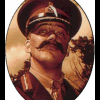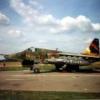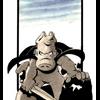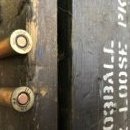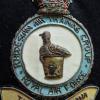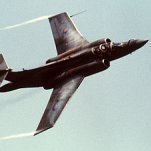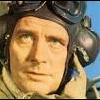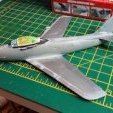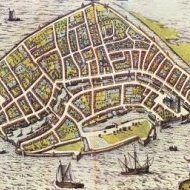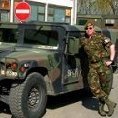Leaderboard
Popular Content
Showing content with the highest reputation on 08/02/20 in all areas
-
First finished work in Rat Year, during past several weeks at home because of the coronusvirus which prohibited going out and extension of Lunar New Year holidays in China. In Chinese culture, red means celebration so I hope the special moment could be settled down ASAP. Kit: Airifx: front fuselage+windshield+canopy, Italeri: other parts. Aftermarket: Master 1/48 metal pitot tube Reedoak 3D scan 1/48 camera man29 points
-
Hi all! One of the first projects to be completed this year...the Kolibri from Miniart in the 1/35 scale...a fantastic model, super detailed, hope you like it! Till the next! Luiz.29 points
-
Hi Everyone, finished this one last week and have finally got a `none grey day` with a strange yellow thing in the sky, to take some pic`s My second attempt at building Hasegawa`s 1/48 A-4C Skyhawk kit Finished in the markings of VA-94, `Mighty Shrikes`, USS Ranger, around 1964-65 Built mostly as Mr Hasegawa intended with just some seat belts added The bombs even came from a Hasegawa weapons set and depict an aircraft fitted out for `Bridge Busting` Decals came from AOA Decals set 48-010 `Battle Scooters (3)` Made the mistake of fitting the two small intakes about half way down the fuselage and didn`t notice until I`d done the decals..... ....which took some very careful cutting and sanding to correct with out damaging the Orange Shrike markings at the same time RBF tags from an Eduard set. Hope you enjoy the pic`s, thanks for looking Cheers Russ26 points
-
Hi all, another new-release Airfix test shot, this one built for last months issue of Airfix Model World magazine. This time, a bit of a tiddler in the form of the newly released 1/72nd Me-262A-2a 'Sturmvogel', the third version of the iconic aircraft released by the company. The aircraft chosen here was actually an Me-262A-1a, fitted with wing mounted wooden racks of R4M 'Orkan' stabilised, unguided rockets. It's a rather nice little kit, although it suffers from fairly deep panel lines and is a tad basic in areas such as the engine nacelles, undercarriage bays and cockpit. For the price point though it certainly does the job and looks the part when finished. AMW provided a few aftermarket bits and bobs with the kit, in the form of Eduard's interior PE set, CMK 's resin wheels and partly exposed starboard engine and nacelle, (designed for the Revell kit) and these added a lot to the finished model. The resin nacelle needed a fair bit of reworking as it was a lot more finely detailed than the Airfix parts as well as being slightly smaller, (particularly regarding the intake cowling and Jumo bullet), so in the end I only used the exposed forward engine section grafted between the kit intake cowling and nacelle and scratch built the opened rear nacelle wing bulkhead with lightening holes. The decals proved a little problematic in that the rear blue/red waistband didn't really fit the fuselage contours even after a liberal coating of setting solution was applied. In the end I decided to airbrush the band colours which was pretty straightforward. Swastikas were added from the spares box as none are provided. All in all, good fun with no real build issues, except the engine nacelle to upper wing fit which was sorted out in minutes. Not a subject I'd normally tackle to be honest, but I'm really glad I did... Hope you like it and thanks for looking. Melchie22 points
-
Some work in progress pictures recorded by my cell phone, if you are interested. Thanks for looking.22 points
-
G'day people, (It is aircraft related but If this is in the wrong forum apologies to the folder mod(s) in advance😊) This is my just completed 1/48 Airfix Albion 3-Point aircraft fueller. I have been working on this little guy on and off for about a year whilst waiting for kit parts to dry and in between models as the mood took me. I expect that you could build it in a couple of evenings if you just wanted to get it done. I built it AOOB (Almost Out Of the Box!) as I couldn't resist adding a few small touches such as the steel helmet and gas mask case on the bench seat inside the cab and the 'rigging' on top of the fuel arms. The kit provides alternate parts for the fuel cabinet doors closed, cabin door closed and different fuel hose sections to allow the fueling arms to be positioned stowed, or with the outer two arms positioned at either 45 or 90 degrees, so you will need to pay attention to which part corresponds to what position that you wish to depict. I used the kit decals but re-arranged the side number by cutting the number out of the decal and re-arranging the numbers so that it would not be the same as everyone else's. The decals performed very well and I was surprised to find that the kit included decals for the drivers instrument panel and the fuel valves in the rear cabinet. It would have been nice to have a few more decal options, even if it was just some additional numbers but otherwise this was a great little kit - thanks Airfix! cheers, Pappy19 points
-
So, here are the last two refreshed latinas from 2016. FAS Corsair: Tamiya kit with Aztec decals, Tamiya and Gunze paints, EZ Line for brake lines, plastic rod for antenna. According to fellow Hyperscaler/Britmodeller Marco, the wheel wells and landing gear were also painted in camo. Got that info too late so my dad kept them the way they were. The model shows one of the five El Salvadorian Corsairs that took part in the 100 Hours War or Soccer War between El Salvador and Honduras from 14th to 18th July 1969, the last time Corsairs went into battle. FAH Corsair: Hasegawa kit with Aztec decals, seatbelts added, scratchbuild parts for the armament switches on top of the instrument board, brake lines and antenna wire with EZ Line. The kit includes a 1000lb bomb but the biggest ones the FAH had were 500lb bombs. This one, together with the smaller clamps were taken from a Hasegawa P-51 kit. The "T" antenna on the rear belly was taken from Hasegawa´s ancient F4U-4 kit. Painted with Gunze H54 Navy Blue. The flags were painted too, only the stars are decals. The model shows the a/c of Major Fernando Soto Henriquez who became an ace in the war by shooting down two FAS Corsairs and one FAS Mustang on July 19th 1969. Most probably the plane didn´t have the noseart anymore when the war started, but it looks good and I´ve never seen FAH609 done with it so we decided to apply it. DSC_0021 by grimreaper110, auf Flickr DSC_0001 by grimreaper110, auf Flickr DSC_0002 by grimreaper110, auf Flickr DSC_0003 by grimreaper110, auf Flickr DSC_0004 by grimreaper110, auf Flickr DSC_0005 by grimreaper110, auf Flickr DSC_0006 by grimreaper110, auf Flickr DSC_0007 by grimreaper110, auf Flickr DSC_0008 by grimreaper110, auf Flickr DSC_0009 by grimreaper110, auf Flickr DSC_0010 by grimreaper110, auf Flickr DSC_0011 by grimreaper110, auf Flickr DSC_0012 by grimreaper110, auf Flickr DSC_0013 by grimreaper110, auf Flickr DSC_0014 by grimreaper110, auf Flickr DSC_0015 by grimreaper110, auf Flickr DSC_0016 by grimreaper110, auf Flickr DSC_0017 by grimreaper110, auf Flickr DSC_0018 by grimreaper110, auf Flickr DSC_0019 by grimreaper110, auf Flickr DSC_0001 by grimreaper110, auf Flickr DSC_0002 by grimreaper110, auf Flickr DSC_0003 by grimreaper110, auf Flickr DSC_0004 by grimreaper110, auf Flickr DSC_0005 by grimreaper110, auf Flickr DSC_0006 by grimreaper110, auf Flickr DSC_0007 by grimreaper110, auf Flickr DSC_0008 by grimreaper110, auf Flickr DSC_0009 by grimreaper110, auf Flickr DSC_0010 by grimreaper110, auf Flickr DSC_0011 by grimreaper110, auf Flickr DSC_0012 by grimreaper110, auf Flickr DSC_0013 by grimreaper110, auf Flickr DSC_0014 by grimreaper110, auf Flickr DSC_0015 by grimreaper110, auf Flickr DSC_0016 by grimreaper110, auf Flickr DSC_0017 by grimreaper110, auf Flickr DSC_0018 by grimreaper110, auf Flickr DSC_0020 by grimreaper110, auf Flickr19 points
-
My first finished kit this year. It is a P-400 from 347th FS, 350th FG after emergence landed in Portugal 15/01/1943. I only added EDUARD seat belts and from AL tubes made new gun barrels. Colors are GUNZE and TAMIYA.17 points
-
Hi everybody, here's my latest off the bench: first completion for the year but actually started in May 2019 ... yeah, I know, I'm a quick builder... A quick summary of this project KIT: Revell 1:72 EUROFIGHTER TYPHOON AIRFRAME: EUROFIGHTER TYPHOON M.M.7278, 4° Stormo, 9° Gruppo, as seen in Grosseto in 2006. This A/C underwent various upgrades during its operational career, and was eventually assigned to the REPARTO SPERIMENTALE VOLO; it crashed in the Italian sea during an airshow near Terracina in 2017. Sadly, the pilot, Captain Gabriele Orlandi, didn't survive. MARKINGS: kit decals (not the best ever, especially the stencils: I experienced some inexplicable silvering on some) PAINTS: Tamiya Sky Grey and Flat White variously mixed for the main airframe, U/C bays, intakes and ordnance; Mission Models Light Gull Grey for the nose cone; Tamiya Flat Black and Italeri Dark Gull Grey for the cockpit; various Italeri and Lifecolor for detail painting; AK Intercative Extreme Metal Steel, Model Master Metallizer Exhaust for the exhaust cans. WEATHERING: kept to a minimum, since the aricraft had served for less than two years in 2006, so: black tempera wash for the wheel wells and struts and for the exhausts area, dark grey oil wash for the panel lines AFTERMARKETS: PAVLA cockpit set, which included vacformed windshield and canopy; I ended up using the kit windshield though SCRATCHBUILDING: quite a list, here: - seamless intakes, although I didn't go for the full length trunckings: I vacformed the visible area at the bottom of the intakes themselves, and scratch built the sensor inside port one - windshield and canopy internal frames, using styrene sheet - rear view mirrors, again from styrene sheet - HUD and its mounting brackets, from thick clear plastic (a CD cover) and brass pipe - canopy opening arm, from brass pipe - APU exhaust, from thin brass sheet (0.1mm), bent to shape and soldered - brake lines on the wheel struts and cabling/piping inside the U/C bays, using various sizes of copper wire and stretched sprue - tail sensor, using a segment of sprue gate - one of the nose sensors, using styrene sheet and brass pipes, since I lost one to the carpet monster... - the rudder and flaperons where cut from the tail fin and wings and re-positioned as per some reference pics, to have a more dynamic pose All of this is illustrated in the WIP thread, here: On with the pics (lots of them, beware! ) APU exhaust detail Cockpit The underside And here are the seamless intakes This shot of the exhausts inner side is from the WIP And finally: the typhoon smile All comments welcome Ciao16 points
-
Capt. Claude J. Crenshaw, 369th FS, 359th FG, 8th AF, East Wretham, United Kingdom, September 1944 Eduard Kit, OOB. Painted with Ammo Acrylic Silver and Gunze Super Metallic SM01,weathered with pigments and oils. It's a really nice kit, with a couple of niggly bits, and just watch the parts off the sprue. I had a few parts that had fallen off the G sprue, and all the canopies had fallen off, and had to contact Eduard who sent the missing part quickly (i completed the model by borrowing from another kit, but the replacements have arrived so Kudos to Eduard). Built thread available here Peter16 points
-
Hi, Thanks to great help of @Ed Russell(who provided me with key photos - Ed, I appreciete this help very much) recently I fnished Supermarine Sea Otter in colours of 292 Squadron RAF. Machine is from CBI theather, namely from Ceylon in summer of 1945. I appreciete also advices and answeres of BM fellows in the thread Small modification are introduced following photos, Decals from drawer. Riging with EZ. Comments welcome Regards Jerzy Wojtek16 points
-
First attempt at this scale, 1/32. I used Vallejo Aluminium Dope to paint it, which was ok but very delicate. And as for the 'Risque Tout' decal, that was the most delicate decal I have ever had to apply. I still don't know how I did it. Going to have a rest from Biplanes, and do a Spitfire next.14 points
-
Here are two Mustangs built for the P-51 STGB, a Hasegawa kit as Big Beautiful Doll and Tamiya as Nooky Booky IV. Thanks for looking. AW14 points
-
Bronco’s A13 Mk I in France after the battle in 1940. I modeled this after a photograph that caught my attention/imagination-a British tank knocked out or abandoned then tagged by the Germans.13 points
-
Finns are bit behind swedes on number when it comes to WIP projects - but let's keep them ahead on the finished models Folland Gnat F.I, Finnish Air Force 1971 Kit: Special Hobby Folland Gnat F.I Finnish and Yugoslav Service (No. SH72137) Scale: 1/72 Paints: Vallejo Model, Air & Metal Color Weathering: Flory Models Wash, Vallejo Weathering Effects Lovely little kit that came together nicely. Mostly out of box - apart from some tiny additions in the cockpit and the pitot tube. WIP thread:13 points
-
Complete the Mirage III C in the French EC/2/10 'Seine' scheme. It was a nice build and I did try some pre-shading, it's really difficult to know how to do this, depending on the finish made a difference to what you could see. I did intend to go with the open cockpit, but the interior was not up to scratch. Also had a canopy fit problem, I am not sure why? I wanted to build this as it was something that you don't see that often. Colour wise, it should be a little more grey than this. Again, thanks to all that helped with some reference photos and info. Really appreciate it.12 points
-
If anyone feels the urge to look up my tailpipe then they get what's coming to them. Been following your skeeter build avidly Ced even tho' I don't always have the time to post. Oh, and your spitfire build. And the ME410 build. And Sunderland. FW190. Heinkel, Whitely, Dambusters. Dammit man, you need a forum all to yourself. I just can't keep up. Ta Roger Yes Ghost. Thanks for the correction Jason. It's got a bit lighter since I last posted so we should be good going forward Thanks Giemme - I hope it provided what you were looking for And where did these rumours start? and how would one know? Tunnel vision eh? I'm pretty addled in my dotage. The reason I think I didn't need much filler on the Fly kit is that there really wasn't that much kit in the build - I ended up making most of the stuff myself I remember reading an article on Mr Stanshall back in the mid 70's. He was carrying out some "research" on the London Underground to observe the reactions of passengers. I remember one "experiment" was him sitting, dressed in a big raincoat reading a newspaper. He had a false arm holding one side of the paper and his unused real arm would sneak out from under the coat and start pilfering stuff from the passenger next to him (who obviously was in on the prank). The other one I remember was Stanhall standing by the exit door, and as the doors started to close, he would smash a couple of stink bombs (remember them?) and leap out the door before any passengers could assault him, then he would watch their reactions as the carriage pulled away. I remember listening to Rawlinsons End on the John Peel show on many occasions. Drift? I see no drift! But I do see a part started Venom lurking on the benchtop. Starting with the easiest task, I sanded back the filler around the nose. It looks okay but I won't know until I've colored it in a bit, which should be coming shortly, but first I have to fill that gaping gap underneath. So instead I went to the wings, or rather wing, singular. A dry fit showed a problem - one which you can't see in this picture due to my lack of decent photography skills... inside that resin intake is the outtake. Or would it be the throughtake? Anyway, the bit that goes from the intake into the fuselage. What I am trying to say is that the resin part has a hole where you can see right through to the plastic of the fuselage. No likey. That meant I got to use one of my handy "not quite sure what size hole I'm going to need but one of these will do" tools. Actually, it's very handy for making larger holes in plastic and very controllable by hand See? Easy. Another dry fit showed me that the hole was in the right location but I could see the thickness of the plastic through the intake, so out came the half round file and the unwanted material on the backside of the hole was removed in a few seconds The intake vanes were a bit of a bugger to fit - tiny pieces of plastic which didn't mate up to the intake opening so it was back to that old swipe the file, fit the bit, swipe the file, fit the bit game. The pieces were also a tad on the thick side but once they were in place, I managed to drag the back side of a blade up and down each side to give them a much thinner appearance more akin to the 1:1 counterparts Then found that from the side they looked all cattywampus. Some carving was required and they now look the part. Dry fit again and the view from the intake is much improved. However looking at this photo, I don't like the round hole - I doubt very much if the 1:1 just has a nice neat circular ducting in there. And after a quick google I find that the 1:1 has pretty much just that... a nice neat round hole in there. Bigger though but that's an easy fix and the vanes will not present any problem when enlarging that hole. Talking of holes, I really wanted to get that gaping hole in the belly fixed so I can get some primer on this - that meant I had no option but to go ahead and fit the engine. Although I had been fretting about this the solution turned out to be rather simple. In order to maintain concentricity between the exhaust and the surrounding airframe, I used 3 plastic spacers cut from scrap sheet to hold the exhaust in position. Epoxy glue was delivered through the hole in the belly surprisingly without dribbling any on the fuselage itself. Fifteen minutes later and removing the spacers showed that they had done their job. The biggest problem I have now is trying not to damage that exhaust sticking out the back end. That resin is so fragile now that I thinned it out. I'm bound to damage it somehow. At last I could now proceed to close up the remaining gap in the fuselage although it would have been nicer had the parts fitted properly. It seemed that you could only get one surface to fit at any given time. The other three surfaces all wanted to go off and do their own thing. I'll just have to beat them into submission. The more I see those 4 danglies hanging off there the more I dislike them. I have been unable to find any photos of those danglies anywhere. Are these just a figment of CA's design department? After the one edge had been glued, more of the magic sticky was applied and a clamp brought in to coerce the offending edge to comply I've spared you the hours of sanding that took place, and will also be taking place at the next session, and the session after that. There was hours of it there was. Bloody boring that sanding is. I dislike it intensely. ooohh quick question before I go: Does anyone have information on the underwing pylons for the FB4? A few of the photos show 28 Sqn Venoms with pylons but no stores. The CA kit only provides rather naff looking rockets12 points
-
Afternoon all... It's been a while since an update on this monster - work and a lack of mojo conspiring against any significant progress. However, I have made some in-roads into the cockpit transparencies, which are vital in capturing the look of the BUFF. You only get one canopy with the kit so there's no room for error - definitely a case of measure thrice and cut once. When the cockpit glazing had been trimmed to the correct shape, it became apparent that it was quite significantly wider than the fuselage. This is because as the fuselage immediately below the cockpit curves inwards too much as you move up to the base of the flghtdeck windows, and therefore is too narrow for the cockpit to sit on correctly. The solution was to make a plasticard 'base' which matched the shape of the bottom area of the transparencies. This was then mounted on the fuelage where the glazing will sit, and the difference in space built up with Milliput and blended to shape. This has now corrected the shape of the fuselage sides, as well as making the cockpit more or less a drop-fit: DSC_0305 by Thomas Probert, on Flickr The cockpit windows have been marked out with masking tape, and are not 100% correct yet but have given a good approximation: DSC_0315 by Thomas Probert, on Flickr DSC_0316 by Thomas Probert, on Flickr When compared to the original: Nose on view by Thomas Probert, on Flickr I think I'm not too far off: DSC_0309 by Thomas Probert, on Flickr A bit more fettling ahead yet, but progress is progress, no matter how small... Tom11 points
-
Thanks gents! Today’s mission is to produce a 1936 patented Shorts reclining chair in the one true scale: The sides, seat and back have just been tacked together with cockpit glue. I am going to disassemble them and try to get some moulding done, because I don’t fancy scratch building another 14! Regards, Adrian11 points
-
I wanted to try it out before I go to the gym (closes at 6) so here are a couple of Oyumaru moulds and the first two really quick and careless casts with using car body filler: “Production”ones will be better because I will take more care!10 points
-
Oh sorry, I have removed the top 'tube' ready for repositioning further up (as per General's orders): I used to say 'WWND' quite a lot (What Would Nigel Do) and now I think I need another abbreviation… What Would General Melchett Do - WWGMD. Not rude is it? No? Good. This has just arrived: I need to read the instructions, of course. Oh no, wait! Oh, don't panic, turn the sheet over and you get the 'English' version: How's your nether frame? No, don't answer that… What about this though? No idea.10 points
-
Thanks Giorgio I will be pushing my boundaries (oooer Missus) in several directions; wish me luck! Thanks Bill Please DO chip in whenever you think I'm going astray; I'll definitely need help. Thanks Simon Ahem, thanks Bell (Fnaar resisted) Thanks chaps! Not much more done as purchases arrived!± This from Mrs B: Crikey! Do I need goggles do you think? If that's not bad enough: "Use in a well ventilated room"? What could it be I hear you asking. "Avoid contact with skin and eyes" - sounds scarier than the Skeeter! Bet you weren't expecting that eh? "Use in a well ventilated room" If 'the room' was well ventilated I wouldn't need the air freshener now would I? 🙄9 points
-
It is an incredibly rich shape environment James! One of the reasons for my geological speed is the sheer amount of observation and (re)appraisal of the constant shifts in contour and X-section across the airframe. -It's not too fanciful at this stage to refer to it as much as a landscape as an aircraft! (At this rate Robert Macfarlane will be bringing out a book on the Sea Vixen...) Agreed. Both that aspect and the bulges for the Microcells won't feature at all in the first phase of the process as I want to get all main profiles integrated as a convincing whole. Subsequently I'll come back through and attend to all lumps and cuts and panel openings @etc. in a 'second fixing' before the real detailing starts. No region of the map is ever hidden from the truly warped mind Bill! More prosaically - if you type 'Sea Vixen' into the search function on Twitter there are a deluge of Japanese manga-related posts with either 'Sea Vixen' or 'DH110' in the title or username, this being only one of the most recent. Uncle Geoffrey would be truly boggled. 'You can't get quicker than a Vixen fitter'! *Joke withdrawn by Quality Police No problem Johnny. It's one of these, at that price: https://www.amazon.co.uk/ELEGOO-MARS-Photocuring-LCD-Printer/dp/B07KRWNR82 My peripheral vision read that as 'whore' and I thought that you'd suddenly become far bolder in your comments Steve! Thanks for digging James The front fuselage section is 'quartic' enough for my purposes now (given that some of the latter side detail will be buried from view by commencement of intakes/wing) so I'm moving on to the really tricky bit that starts behind it. Have just projected top and bottom profiles into a new component space for the main fuselage/engine tunnel section but need to do some working out of process first as to what and how many profiles/rails I'll need to build 'the landscape'! Right. Before committing to the next region back - Tony Buttler talks evocatively here about 'sculptured skins' in relation the the main box/engine bays that form the core of this aircraft - I've spent any free time during the week (pitifully little...) trying to reduce the design work down to its key essentials in terms of capturing form. The following screenshots aren't actual sections of the aircraft but a fictitious amalgam of the main forms that I'm going to have to reconcile with each other in three-dimensions: @hendie was right (and far too much of a gentleman to say 'I told you so' since'!) when he suggested several pages back that I would have to devolve the nose-to-tail run of the aircraft into a series of connected sub-assemblies, rather than build them as a single continuous loft. How right he was. This isn't simply about getting the aircraft to look 'right' in terms of the 'visual' (critical though that is of course) but equally involves simultaneously translating the shapes of an actual aircraft into the design language that Fusion uses to sculpt virtual form. In this respect I've come to realize (belatedly you might say) this is a parallel process and my job involves reconciling those two aspects with one another if this is to work. The aircraft tells you what it needs and Fusion tells you what limitations there are to the various ways of trying to meet those needs. In relation to this I had to revise my initial idea of simply building the engine bay as a cylindrical tunnel due to the way both the tunnel walls within it and the opening for the access panel extend outward into the wing slightly -as you can see in Damien Burke's superb revealing shot from the excellent 'Thunder & Lightnings' site: Image credit: Damien Burke In these tests I've managed to join the contours of an imaginary engine bay to meet the (equally imaginary) lateral profile of a wing in a way that I think will let me resolve this part of the aircraft: Front view: I managed to make that by drawing only four lines so although the actual aircraft will require more fidelity in three-dimensional space, feel that there's a working methodology present now reducing these issues to their bare essentials in terms of technique. You've no doubt clicked that the idea is to build to top and bottom parts as separate 'shells' (due to the necessity of them joining outboard at the wing profile), which will then subsequently be turned into a single solid body once all required profiles have been reconciled. The wing profile will act as a 'gatekeeper' at one end then to ensure that both halves meet at the same point in space outboard, with a centreline profile ensuring the same happening vertically down the middle of the aircraft. Banging this out quickly as with Storm Ciara about to stick us Orange weather (ironically for the Republic...) there may not be power to do anything later. General Election here also today just to add to the foment - walking back from the polling booth a little earlier I happened upon this scene of the storm approaching from the West coast: Symbols everywhere these days it seems..... Take care until next time me dears. Tony9 points
-
I am really enjoying this GB, but then as a Yorkshireman I suppose I might just have some "Nordic" blood myself! A DNA survey a few years back showed that nearly 25% of people from my home county had the so called "Viking Gene" which is perhaps not too surprising as Jorvik (York) was capital of the area settled by the "Norsemen" for quite some years. Of course it might just mean that our Great Grandmothers or other female ancestors had a one night stand with a Nordic crewman off a boat docked in Hull, but I guess some families may go back to the original settlers - might explain my mad urge to go "Viking" when I am getting poor service in shops etc. Cheers Pete Longbeard9 points
-
P-51K “Nooky Booky IV”, Maj. Leonard K “Kit” Carson, 362nd FS, 357th FG, Leiston, May 1945: Tamiya 1/72 with Hasegawa prop and spinner. Vallejo Metal Colour Acrylics. AW9 points
-
P-51D “Big Beautiful Doll”, Col. John D Landers, 78 Fighter a Group, Duxford, April 1945: Hasegawa 1/72 kit with dropped flaps from Airfix kit. Vallejo Metal Colour Acrylic. AW9 points
-
Thanks, Giorgio - and everyone. It’s a lot of tiny work - and so far I’ve only done 2 which will end up on the finished model (the two LR tank cabs), so have 13 more to do. But it’s surprisingly satisfying as an exercise in what’s possible (but also a lesson in how much difference even a small change makes in this scale). As I have said before, I think, the real point of spending so much time and effort on Stringbags with a wingspan of only 40mm is the fact that they are really the focal point of the entire scene that I have in my head. Models - particularly dioramas, and this is essentially going to be a diorama - blow me away when you can spend ages looking at them in detail, yet every time you look you find something new. I have referred to @andrewa‘s Hermes / Broadsword / Yarmouth on here before; that’s the benchmark for me, because it’s completely coherent and tells a story (quite apart from being stunningly executed); dozens and dozens of tiny details are there (in his case on 3 different ships close together), but not one of them looks incongruous and breaks the spell - “surely it wouldn’t have looked like that in real life...”. In my head, I know exactly how I want this to look in the end - still a l-o-o-ong way in the future, I fear. If I get it right it will tell a powerful story of 43 young men about to get airborne in truly hideous weather to attack the world’s most powerful battleship in slow, obsolescent biplanes. However good the aircraft models are, if there is no-one on the flight deck, or the bridge looks as though they’re on a gentle sleepy Summer cruise, or the ship’s weapons and directors are unmanned and all covered up, or the paintwork looks as though she was only launched the previous week, or even if there’s no lifebuoy sentry closed up or crashboat at immediate readiness... then it will just look silly. Hence ridiculously complex resin HACS director tubs a few pages ago (& I haven’t touched a single Pom-Pom yet...!), and flag lockers, and ages acquiring convincing-looking boats from Shapeways. But most of all, these 15 Stringbags are the whole point, so they have to be decent. All this effort will be worth it in the end. Equally importantly, it’s a lot of fun.9 points
-
ICM's new and excellent 1/32nd scale Gladiator Mk 1: Please note, K8000 certainly was a 56 squadron Gladiator but there is no documentary evidence that she, nor any other 56 squadron Gladiator sported the famous chequerboard scheme. This is wishful thinking on my behalf. Max8 points
-
My first post to this site... My January project... Built mostly OOB with the Academy 1/72 f/A-18C in the VFC-12 adversary colors. I have not found the proper decals in this scale for this aircraft so used a few from my spares box. Hopefully, we'll see a set soon so I can complete this project. I have been experimenting with various weathering techniques and pretty happy with these results. Onto USAF aggressors next...8 points
-
8 points
-
I am willing to provide a translation for, in your case, a reduced fee. it say BE VELLY AFLAYED* *It is not need to worry all will be well honored custodian Use balls, do not cut self with axes8 points
-
Welcome Steve Soon be back to normal John - see below. Although I think it's going all Viking Thanks Jont Don't tempt me AW, don't tempt me! There is a rotor head to… no, STOP! With orders for vac forming stuff confirmed, although the machine is due today the PET and plaster won't be here until Wednesday, probably. Plenty to do before then. Here's where we are: I've had a clean up on the rotor head: Now then, I have to decide how much of a 'close up model' this is going to be. My usual kit bashing (OK, plus a bit of fiddling) or a hendie/perdu/TheBaron/Melchie realistic tiny version? This will, of course, be limited by my skills and patience, although not by available tools! First madness. The 'intake' isn't closed at the back, it's open. It's also just a sheet of metal, so it's thin. Perhaps I can vac form it? (The madness has started…) I also glued it in the wrong location - too low, so it's off: I can imagine a little sheet of plastic sucked over that, providing the rim too. Might be worth an experiment? Next is opening the top cover. it's nicely moulded on the kit: Out with the Jeweller's saw: Hack, chop, pillage (but stop there Vikings!) Check Melchie's thread (again) and thin the walls back: That'll do for a start: Not quite there but I need to walk away and let the Inner Viking calm down before he hacks any more off…8 points
-
Plenty of room here Dennis, but stay away from the fire eh? Thanks Bill - good idea to strengthen the kit part while moulding Thanks Michael - I think there may be two versions of the canopy and, as I'm modelling the HAAF Skeeter i'll take Alastair's word for it! Thanks Alastair Thanks Marklo But… Thanks Keith - that sounds like a nice safe option. No heat from spring resin and easy to polish - ordered! I know Johnny, I've had it on my wishlist for a while and just couldn't hold out any longer So, white metal, tiny model, lots of expectations from the audience, canopy moulding… As if that wasn't scary enough I think I might try making some frames from brass. The rotor shaft support and the folded blade support? Hey, it has most other materials so why not eh? 'Cos it's scary, that's why…8 points
-
On February 14th 1945, a cold and overcast morning, the Duty Controller at RAF Hibaldstow instructed that ‘rough weather’ procedures should be observed by all, on account of strong winds. As such, a member of the Women’s Auxiliary Air force (WAAF), Margaret Ida Horton, assisted the pilot of AB910, Flight Lieutenant Neil Cox DFC, by sitting on the plane’s tail while he taxied to take-off position. This was common practice in order to prevent the aircraft ground looping in the gusty conditions. The pilot dutifully carried out all necessary checks and – having forgotten Margaret was sitting on the tail entirely – started down the runway and promptly took off. It was immediately clear to the pilot that AB910 was not handling in its usual manner and upon investigating the cause, he quickly realised that poor Margaret was still wrapped around the aircraft’s tail, clinging desperately to its elevator. Fortunately, he was able to turn into the circuit and land AB910 – and his unexpected passenger – safely, much to the relief of onlookers. The story is further documented here where we learn that Margaret was always known as Ida, so Ida she will be. She said that AB910 was "…a lovely kite, always getting into some kind of scrape. Her squadron identification letters were MVT and I used to call her 'T for Trouble'". Here's my take on the episode, documented in the WiP here. I used the KP 'Early' Vb kit (which is very nice) and airbrushed with Colourcoats, including most of the markings; the serials are transfers though, too small for my mask cutter. I really must do something about the backdrop in my booth but here are my 'best shots'. Forgot the gun covers. Rats. Hang on Ida! We'll be down soon…7 points
-
Recovery Given everything that's going on in world in the moment it's probably a bit rich that I headed up my last post as 'Disaster'. Upon reflection it seems unlikely that ending up with some wonky roundels on a 1/32 scale biplane constitutes such a big problem - especially since it turns out that I've already fixed it. Start by sanding back the dreadful mess. Re-spray the white. Carefully measure off and cut out the outer limits of the roundel. Mask off the full disk. Spray some home-made PC10 over the disk. Remove the masks to reveal this. This looks promising. Now I had to find some decal film. In this case grass green and then spray it with light-grey primer. For the next step I'm going to use some enamel paint - which is unusual for me - but this layer will need to be waterproof. Spray the blue enamel paint. Let it dry and cut the next two discs. Check their size is correct. Cut a hole in the middle of each disc. This is possibly the trickiest bit because the inner circle has to be nice and concentric with the outer disc. Now just apply this as if it was a normal decal. Just make sure the paint doesn't get scratched. Now do the same thing with the red. Or not... Oh well - just revert to identical discs to those I used in the fuselage roundels. Too small for the wing roundels - but it'll do. I wanna get moving. And now to what I call 'letraset' but is apparently called 'DECAdry' these days. These are dry rub-down decals. All the way from Eckersley's Art Supplies in Adelaide. Sent to me by my work colleague Vanessa. Thanks Vanessa! The masking is there to give me some sort of chance of getting things straight and lined up. Unfortunately there were no spare '7' s. So the busted 7 will have to do. I'll tidy it up with some paint later on. The other side looks OK though. I think I might have got each numeral a bit too far apart but I can live with this. Ah! Looking better I think. Situation recovered. Yep - not perfect perhaps but I'm happy with this. That's it for markings on this job. Undercarriage next. Bandsaw Steve.7 points
-
Update #1 - Construction begins (briefly?) My, how this great GB is motoring along after only a few short weeks! There seems to be a number of great build threads and detailed updates popping up daily. I'm quite surprised at its overall popularity however think that we might be all getting a little tired of building Spitfires and 109's that when something like this comes along it's a welcome breath of fresh air. Anyway, not a lot to mention, however a couple of photos have been added to show where I'm at. Like many kits of the day (and still a common practice today) the fuselage comes in many parts to allow the provision for a Two Seater variant (which along with the RF version, I also have). The ejection seat is split straight down the middle, so I've tried to cover up the offending join line by adding two bits of sized up plastic card. An AM seat probably would have been better, however I always try to improve whats provided before shelling out extra cash on AM stuff. The cockpit sidewalls are also bare, so I made up some plastic card additions to improve these a little (note to others - they are not accurate!). I've painted up a few internal parts that need to be done to progress the build. The cockpit sidewalls and tub have been painted in a light gull grey and various areas picked out in black. I'll use the kit supplied decals that make up the instrument panel and console dials. To my eye, these decals are more than adequate for 1/72 scale and as I'm still not sure if the canopy will be left open or closed, probably won't even be that noticeable anyway. My modelling time is not that great at the moment, so I'd best just get on with things and leave issues that won't be noticeable well alone - like those sink holes in those intake spitter plates!! (... quite lazy on my part I know!). Cheers.. Dave7 points
-
Clearly preparation for some sort of Open Day or Air Display. Do you reckon they got away with the photo propped up under the nose claiming it’s an Apache, or did people notice?7 points
-
Thanks all. I have some cockpit work to show you today. Another omission from the kit is the bulkhead behind the pilot seat. Whether the cockpit is posed open or not, this is an important feature that would easily be seen so I set about making one from scratch. Work started by cutting out a piece of styrene card and shaping one side until it fit properly against the contour of the inner cockpit wall. Once the shape was correct, the centerline was drawn on the bulkhead. I did this by measuring the distance from the fuselage seam to the inner cockpit wall along the lower edge of the bulkhead. The line was drawn and adjusted a couple of times by placing the bulkhead in the fuselage and looking straight down the aircraft axis from the nose until the drawn centerline lined up with the top and bottom fuselage seams. I then placed the bulkhead on my work surface and stuck some tape on the back so that the edge of the tape lined up with the centerline (below). The tape was then cut along the edge of the bulkhead: Then it was peeled off and stuck to the front, aligning the tape edge to the centerline. In this case, I actually moved it out a little to given me some wiggle room for adjustment - better to cut the piece too big than too small. The first trial fit revealed that the bulkhead was too wide at the top so I began making it narrower using a file. I was careful to remove the same amount from both sides so that the part stayed symmetrical. After a couple of trials, I realized that the fuselage halves were actually both a bit warped and that this was messing with my adjustments. I was risking cutting the bulkhead too narrow so I assembled the halves together using tape to hold everything (not a simple task with no locating pins!). I continued to adjust and check for proper fit again, this time with the rear canopy piece dry-fitted as well to make sure everything would line up properly. Once I was satisfied, I cut the upper part of the bulkhead to the proper shape and CA-glued it securely to one side. Details were then added. That's today's episode. Thanks for following along.7 points
-
I've been quietly following this epic build, mostly dumbstruck at the bleeding edge approach you are taking in pursuit of achieving small scale Sea Vixen perfection, but I have to comment on that superb picture above. Probably one of the sharpest underside shots I've seen of this aircraft. A beauty indeed and lots of weathering/detail there which would enhance any model, assuming it could be replicated. I watch in wonder! Terry6 points
-
6 points
-
Hello everyone! This was my attempt back in 2013 at correcting the awful Trumpeter 1:144 Chengdu F-7-II, Chinese derivative of the early MiG-21F-13. It represents Chengdu F-7-IIN "701", of No 5 "Arrow" Sqn, Air Force of Zimbabwe, based at Thornhill-Gweru AB, in late 1980s. I ended up using parts from a scrapped Revell MiG-21PF to correct the major flaws. The tailfin was wrong for an F-7-II being more like an F-7-III (similar to MiG-21MF). The underfuselage fin was wrong too, being too short in height. The tailplanes looked like inflated cushions and even sanding them flat was no good so I used the Revell parts instead. Besides they were somewhat undersized too.The u/c legs were so tall the kit would have ended up looking like it was on stilts! The kit was fully painted and varnished with brush. The markings came from a Berna decals sheet. This represents an F-7-IIN early in AFZ service so it only had 2 wing pylons. The machines were later upgraded and had 4 pylons. These machines were quite clean so weathering was minimal. Not a great result but at least I saw it through and managed something much better than what came in the box! Thanks for looking Miguel6 points
-
Milestone reached: the leaf springs and rear axle are fixed to the chassis! The jig was very helpful there. I used 0.4 mm brass rod to simulate the attachment of the springs to the rear axle. I'm now working on the mounts. On the real thing the mount is a little bit wider but I think it's fine like this. I'll punch some bolt heads and glue them to the piece of card that's on the chassis. In the meantime, some cleanup of kit parts that I'm using. This is an air brake chamber, slightly, but only slightly, misalligned. But it already looks better after some cleanup and fresh detail. I also cut off the mounts on this thing, way too thick and the brake chambers end up in an unrealistic looking place. Should be better now.6 points
-
Update #6 - Dayglo prep Looks like this little 1/72 Safir is going to get swamped by a few of its 1/48 bigger brothers, so I'd better progress it some more and bring it closer to the finishing line. The silver undersurface is nice and dry so the Dayglo areas were masked off ready for the first layers of paint. Dayglo paints are by their nature quite thin and transparent and I have no idea how some modellers get away with hand brushing them. My tried and trusted way is to paint a solid white base first and then numerous thin coats of the Dayglo paint all applied with an airbrush. The photo sequence below starts with two coats of Mr Color #62 Matt White. Once dried I applied a good coat of Humbrol #24 Trainer Yellow, however I'm experimenting a little bit here. My overall aim is to replicate a faded Dayglo finish, so the underside yellow layer was painted up in a fairly solid finish, whilst the upper sections and tail fin were softly sprayed to represent a lighter / faded look. Not sure if this is the way to do it, however let's see what happens when the orange is applied? Till next time.. Cheers.. Dave6 points
-
Finished the cockpit (though I repainted the bulkhead (lime), tank and radio rack (black) in the meanwhile). I added extra details to the battery, tank and radio, to make the area look more interesting.6 points
-
Am I the only person who is going to comment on the use of the (new to me, at least) word “cattywumpus”? And as definitions of 1950s UK aircraft design go, “a mixed load-out of imperial bravado and disillusionment” is genius. Though perhaps a small auxiliary pylon of “good training” might be conceded; the further I get away from my flying days - not to mention the longer I spend in the civilian workplace - the more I realise how very, very well trained we were.6 points
-
Thank you. Having just re-read the bit you quoted, I’m not saying that models without every single detail looking right “look silly” - there are countless examples on this very site, and anyway it’s a matter of taste. But a diorama / model that sets out to portray a specific moment in history has to get it right (or at least be plausible in the absence of clear evidence). From the very start I left myself no wiggle room by saying I was building Ark at c.7pm on 26 May 1941, so that’s how she must look. So no port side pom-poms, loads of research (aka questions of people who know more about it than you!) about which aircraft were in which scheme, no folded Fulmar on deck alert (to my disappointment)... But please: no-one should think I’m calling their model “silly”. Bad choice of word.6 points
-
Vacforming, brass, next you’ll be using CAD and 3D printing and your transfer to the dark side will be complete. AW6 points
-
6 points
-
Painted some chipping. I thought I would do it before washes so it would be toned down and blended in a little better. I also used light grey instead of silver- which I think works better especially with darker camo. And the fuel tanks. Smaller external stuff got their details highlighted with Tamiya Panel Liners.... ... while majority of the plane got a Flory Models wash. It's a clay based wash that dries very quickly and is very easy to remove. Here's the main weathering done. Will add some smaller details still but I don't think much is needed. And the underside. Canopy masking off and some more weathering added. Getting real close! Last thing I did was used a pin as a pitot tube. Not much thinner than the plastic part but nice and straight - and shiny! Looking at the real thing - it's quite hefty pitot tube for a plane for it's size. And it is done! Very fun little project without any big problems. And it is small, in case that wasn't already apparent. It might be bit hard to judge with no reference - but here are couple size comparisons to other planes: Hawker Hunter... ... Vampire ... ... and Thunderchief! Another one seater & engined fighter More pics posted on the gallery Thanks for following and contributing to this thread! Now, one project out of the way - sensible thing would be concentrate on the other projects that I have already started. But then again, a new project sounds like fun too? What say you @Enzo Matrix ?6 points
-
Brilliant work, not sure what the chap lying downs dreaming of though 😄6 points
This leaderboard is set to London/GMT+01:00

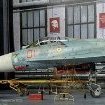


Wedge-TailedEaglePortraitRaptorDomains.thumb.jpg.41a306d3445a68f0f2df773e01776ea6.jpg)
.thumb.jpg.d17ff607fc7e89ed057e63fcb6f2a888.jpg)
